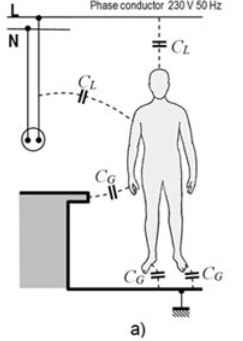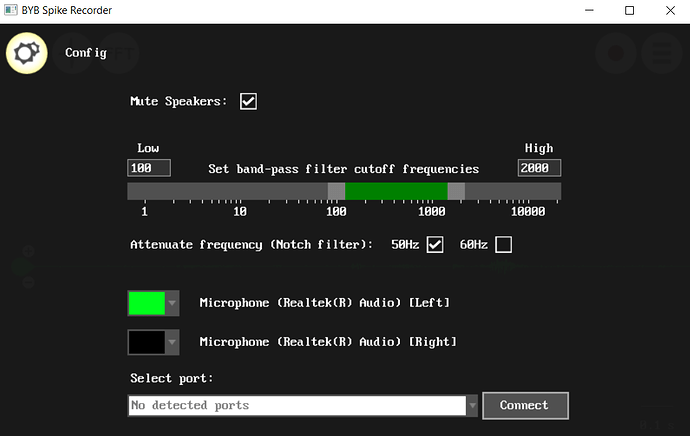First, it’s worth checking if your device is connected to Spike Recorder, and that you’re not just recording audio instead of the data from your SpikerBox.
Here are some tips on how to lower the noise during recording:
-
Bad connection of measurement electrodes and subject will produce high impedance between signal and amplifier and as a result, the amplifier is more susceptible to noise.
-
You can get noise (60hz or 50hz depending on your country) directly by connecting to your computer that is powered by mains. So if you are using the computer for recording, try using a laptop that runs on battery. Remember to disconnect it from the power supply.
-
You can also have capacitive coupling with mains from different objects and conductors (the image below depicts a human subject but the same is valid for insects or any other subject). Try changing the table or material under your setup.

-
You can have noise-induced measurements from high-frequency sources around you. Such as switching power supplies and transformers from electronic devices (eg. laptops, microscopes, or anything else on the table).
-
Some types of ceiling light power supply circuits can emit “high” frequency electromagnetic noise (from 50kHz to 300kHz). Turn the light off and check whether it makes a difference for the noise floor.
-
Try moving away from communication devices, WiFi routers, Bluetooth, mobile phones, or any other radio emitter around you.
-
Extension cords in the vicinity of the recording spot can also cause issues. Once we had a lot of noise because we were close to an extension cord reel. After we moved the extension cord out of the room, the noise dropped drastically.
Generally, you should try to move away from any electronics and EM sources.
Also, you can use filters in the Config screen of the PC/Mac application to filter out some of the types of noise.
